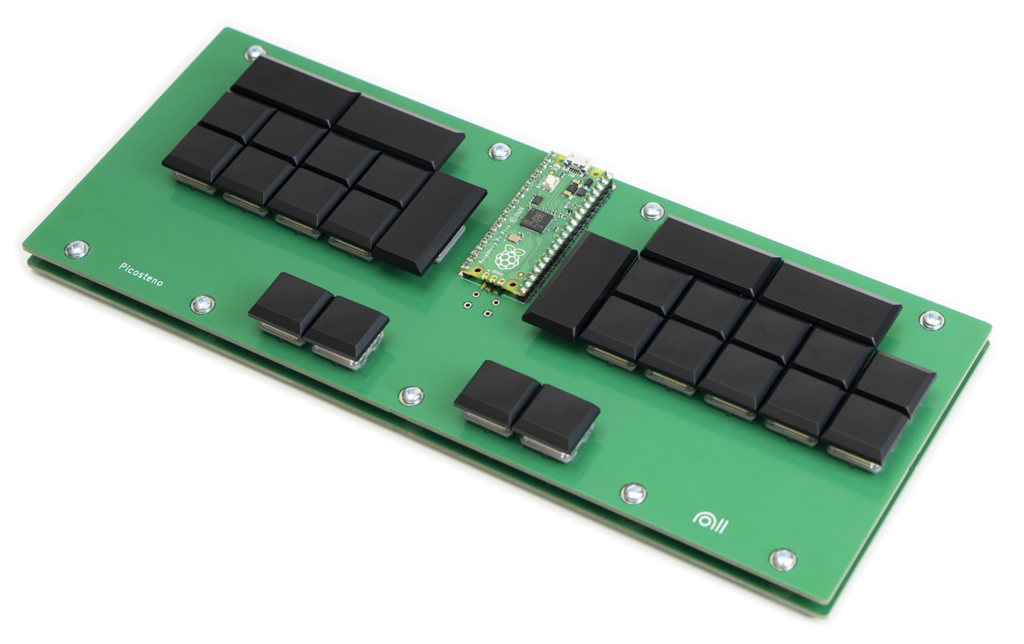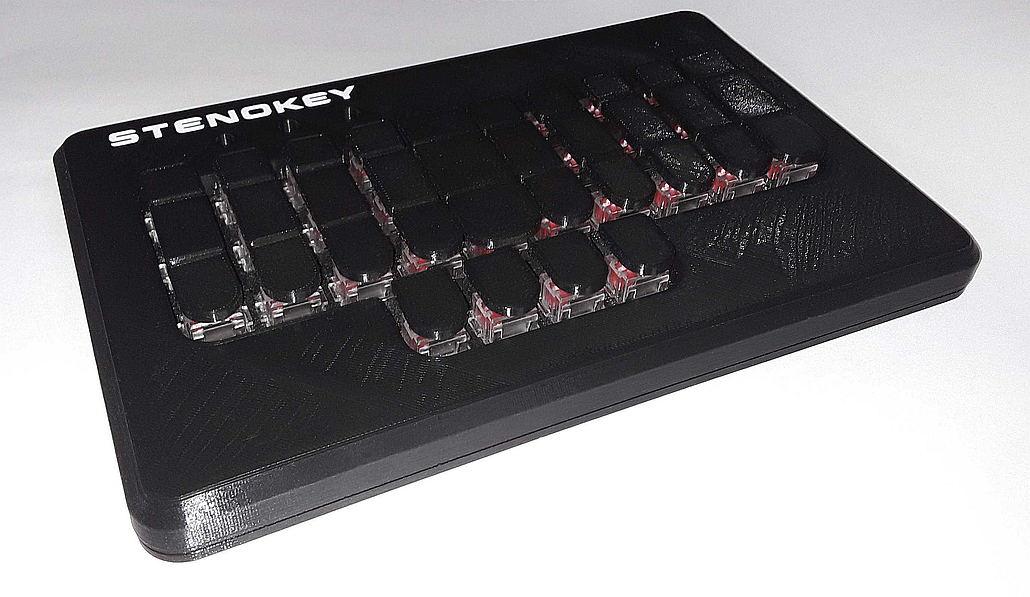DIY steno writers: Difference between revisions
| (3 intermediate revisions by the same user not shown) | |||
| Line 1: | Line 1: | ||
== DIY | == DIY writers specifically for Plover == | ||
Projects to build your own machine. | Projects to build your own machine. | ||
| Line 29: | Line 29: | ||
|} | |} | ||
== Choosing a key switch == | |||
Choose a linear key switch with a light actuation force. The two most popular switches are the '''Kailh Choc Pink Pro''' and the '''Gateron Clear/White.''' | |||
See: [[Steno key switches]] | |||
== NKRO keyboards with an ortholinear layout == | == NKRO keyboards with an ortholinear layout == | ||
Keyboards with an “ortholinear” layout have the keys in straight columns. This is handy for steno, as it makes it easier to press two keys in a column with a single finger. | Keyboards with an “ortholinear” layout have the keys in straight columns. This is handy for steno, as it makes it easier to press two keys in a column with a single finger. | ||
Latest revision as of 22:22, 23 June 2024
DIY writers specifically for Plover
Projects to build your own machine.
| Product Name | About |
|---|---|
| MechWild BB Steno | 
A barebones keyboard kit from MechWild. Comes with a PCB ($10) and optional microcontroller (+$8) and a few other parts; you supply the switches and keycaps. |
| Picosteno | 
A full Steno kit from Nolltronics. Starting at $20 for the PCBs and mounting hardware and going up to $61 for everything you need, this is the cheapest board you can make! |
| Stenokey | 
Stenokey is an open-source do-it-yourself stenographic keyboard project. It is aimed at makers with some electronics experience (soldering) and who own a 3D printer or who have a friend with a 3D printer. |
| The Uni v2 PCB | 
The Uni v2 PCB, instructions in the description. Some prior experience is recommended. Only comes with a PCB and has pre-soldered diodes. |
| Yet Another Steno Keyboard | 
YASK is an easy-to-build open-source design for a steno keyboard. Simple, no 3D printing needed, also exists in angled & staggered version. Check out the build instructions |
Choosing a key switch
Choose a linear key switch with a light actuation force. The two most popular switches are the Kailh Choc Pink Pro and the Gateron Clear/White.
See: Steno key switches
NKRO keyboards with an ortholinear layout
Keyboards with an “ortholinear” layout have the keys in straight columns. This is handy for steno, as it makes it easier to press two keys in a column with a single finger.
The following machines have been confirmed by users to work with Plover after actually trying it:
| Product Name | Manufacturer | Protocol/Connection | Comments |
|---|---|---|---|
| ErgoDox | ErgodoxEZ, Massdrop, FalbaTech, others | USB | The ErgoDox is a fairly high-end NKRO keyboard at $200, with an ortholinear layout. It has two separate halves, so you can angle them to suit you. You can order it with the Gateron White keys, which have an extremely light, 35 gram activation force. Read a guide to Starting Stenography with an Ergodox by Paul Fioravanti. |
| Planck | OLKB | USB | The Planck is a fully programmable NKRO keyboard with an ortholinear layout. It is 40% the size of a standard keyboard. Read a guide to starting stenography with a Planck by DiDoesDigital. 
|
| Preonic | OLKB | USB | The Preonic is a fully programmable NKRO keyboard with an ortholinear layout. It is 50% the size of a standard keyboard. |
| Gherkin | USB | The Gherkin is a fully programmable NKRO keyboard with an ortholinear layout. It is 30% the size of a standard keyboard. | |
| Iris | Keebio | USB | The Iris is a cheaper and slightly smaller alternative to the ErgoDox. It is a fully programmable split NKRO keyboard with 56 keys. The firmware needs to be edited to enable either NKRO or Gemini PR. Available in PCB and pre-built. |